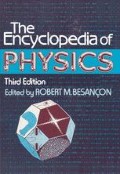Abstract
The Schrödinger equation, first obtained in 19261, was an extension of de Broglie’s hypothesis, proposed two years earlier,2 that each material particle has associated with it a wavelength λ related to the linear momentum p of the particle by the equation
where h is Planck’ s constant. Since any sinusoidally varying wave motion of amplitude ψ and λ wavelength X satisfies the differential equation*
matter waves would obey the equation
In particular, a particle of mast m with no forces acting on it has energy EquationSource% MathType!MTEF!2!1!+- % feaagCart1ev2aaatCvAUfeBSjuyZL2yd9gzLbvyNv2CaerbuLwBLn % hiov2DGi1BTfMBaeXatLxBI9gBaerbd9wDYLwzYbItLDharqqtubsr % 4rNCHbWexLMBbXgBd9gzLbvyNv2CaeHbl7mZLdGeaGqiVu0Je9sqqr % pepC0xbbL8F4rqqrFfpeea0xe9Lq-Jc9vqaqpepm0xbba9pwe9Q8fs % 0-yqaqpepae9pg0FirpepeKkFr0xfr-xfr-xb9adbaqaaeGaciGaai % aabeqaamaabaabauaakeaacaWGfbGaeyypa0ZaaSaaaeaacaaIXaaa % baGaaGOmaaaacaWGTbGaamODamaaCaaaleqabaGaaGOmaaaakiabg2 % da9maalyaabaGaamiCamaaCaaaleqabaGaaGOmaaaaaOqaaiaaikda % caWGTbaaaaaa!4A08!]]</EquationSource><EquationSource Format="TEX"><
